The number of girls and boys dropping out of their schools education has gone down, while more and more young people are accessing formal and informal schooling, says the Annual Status of Education Report (ASER) for the year 2007.
The third definitive survey of status of school education across rural India, conducted by non-governmental organisation Pratham, indicates major progress over last two years in enrollment and availability of schools, teachers, toilets and water in most states.
The findings of the survey also show a jump in mid-day meals, state-run free lunches to retain students in the schools. Another significant finding of the survey is increase in aanganwadi Integrated Child Development Scheme coverage, especially in the North India.
Drop-outs drop
Overall proportions of out of school children have dropped in the year 2007, since last year. This decline is visible in all age categories for both boys and girls.For boys and girls in seven to 10 year old age group, the percentage of out of school children in 2007 stands at below 3% for rural India.
For girls in the age group 11 to 14, the percentage of out of school children has dropped from above 10 to 7.4 %. For Rajasthan and Bihar, the percentage of out of school children in the 6 to 14 age group was above 10% in 2006. This number has decreased to 6.5% in both the states in 2007. Overall, enrolment in private schools has increased from 18.7% in 2006 to 19.3% in 2007. The rise in private school enrolment is noticeable in the older age group of 11 to 14 years. Private schools include government aided, unaided, recognised and unrecognised schools.
More young children accessing education
The survey also reported a substantial increase in the number of children attending pre-schools (anganwadi or balwadi). In 2006, 61.2% of kids three-years of age were attending pre-schools as compared to 75.3% in 2007. For four year olds, there is an increase from 71.9 to 81.8%.
Major increase in the proportion of children in pre-schools (anganwadi or balwadi) has been reported in states like Punjab, Uttar Pradesh, Bihar, West Bengal, Orissa, Chhattisgarh and Kerala with anganwadi-balwadi enrollment showing a rise of more than 10 percentage points between 2006 and 2007. Himachal Pradesh shows highest increase of 30 percentage points.
Learning levels improve
Overall reading levels showed improvement over 2006. Across the country, the proportion of children in first standard, who could not even recognise alphabets has dropped from 38.4 in 2006 to 31.9% in 2007.
The proportion of children in standard one and two, who can recognise letters, read words or more has gone up nationally from 73.3% in 2006 to 78.3% in 2007.
Many states show improvement in reading levels for children in Standard 1 and 2 and there is considerable variation across states. In particular, Rajasthan, Arunachal, Manipur, Assam show an improvement of more than 10 percentage points. Increases are also visible in Jammu and Kashmir, Himachal Pradesh, Uttar Pradesh, Bihar, Jharkhand, Madhya Pradesh, Gujarat and Karnataka.
National figures in 2007 show 58.3% children in Standard 5 can read Standard 2 level text. The same figure for 2006 was 53.0%.

States in which there are significant improvements in the ability of children in Standard 3 to 5 to read Standard one level text (easy paragraphs) or more are the following: Himachal Pradesh and Andhra Pradesh where the improvements are over 10 percentage points. Improvements are also visible in some states in the North East such as Arunachal, Nagaland and Manipur.
Problem solving
All children were orally asked two problems. Both problems were about money and involved children subtracting numbers from INR 50. Children could give the answer orally or in written form.A small proportion of 6-8 year-olds could correctly answer the problems. In this age group, 18% of school going children could answer questions as compared to 6% of non-school going children of the same age group.
The ability to solve these problems is higher with older children: 50% of 9-10 year old children can solve both problems and almost 74% children in the 11-14 age group can do the same.
For older children (aged 11-14), of those who can correctly solve written numerical subtraction problems, about 66% can solve the word problems. Of children who can solve written division problems, close to 94% can solve the word problems.
Comprehension improves
ASER 2007 has explored the relationship between a child's ability to read and comprehend text by asking children oral questions based on texts of different levels.
The ability to comprehend is closely linked with the ability to read. What is revealing is that when children are given a text that is more advanced than they are comfortable reading, a section of children is still able to tackle the text and understand it. For example, among all 6-10 year olds, 23% are comfortably able to read words but not as yet able to read sentences fluently. Of these halting readers, about 11% can answer questions based on the Std 1 level text and about 6% on Std 2 level text. Note that the Standard 1 and 2 level texts are higher than what the child can read comfortably.
Among the children reading a Std 1 level, 66% of children in the 6-10 age group can answer questions from a Std 1 level text. Even though these children cannot comfortably read a Std 2 level text, 23% can answer questions based on a Std 2 level text.
Similar patterns are visible among the older children (11-14 year) as well. Not only can a majority of children answer questions based on the level of text that they are comfortably reading but a significant percentage try to read a higher level of text and understand it.
School infrastructure gets better
The number of schools with fresh water supply has risen from 67 to 72% for primary schools and 73 to 77% in middle schools. Similar improvements are also seen in terms of toilets.
However, there are still a little over 25% schools that either do not have water or if they do have water it is not usable. The corresponding figure for toilets is 40%. In about 92.6% of the schools visited on a random day in October/November 2007, midday meal was seen being prepared or served.
This figure is much higher than the comparable figure in 2005, which stood at 71.1%. Well over 75% of all teachers had received TLM grants for 2006 and over half had received them for 2007.
Similarly, for school maintenance grants, over 80% of schools had received their grants in 2006 and over 60% in 2007. It is likely that the remainder of grants May be sent to schools and teachers by the end of the 2007-08 financial year.
In India, due to low enrollments in small habitations, children in about half of all classes in visited schools, during the ASER survey, sat with students belonging to another standard. This number ranges from close to 70% in states like Bihar and Jharkhand to as low as 3% in Kerala.
The findings from ASER 2007 shows that rural India's schools are well on course towards the goal of universalising elementary education. It also highlights non-formal schooling providing vital support for the first generationof rural learners. The decline in drop-out rates and increase in teacher attendance are a promising signs of emerging quality education in rural schools. 
 Information Communication Technology (ICT) has become, within a very short time, one of the basic building blocks of modern society. Organisations, experts and practitioners in the education sector are increasingly recognising the importance of ICT in supporting educational improvement and reform. ICTs are transformational tools which, when used appropriately, can promote a shift from traditional to a learner-centred environment.
Information Communication Technology (ICT) has become, within a very short time, one of the basic building blocks of modern society. Organisations, experts and practitioners in the education sector are increasingly recognising the importance of ICT in supporting educational improvement and reform. ICTs are transformational tools which, when used appropriately, can promote a shift from traditional to a learner-centred environment.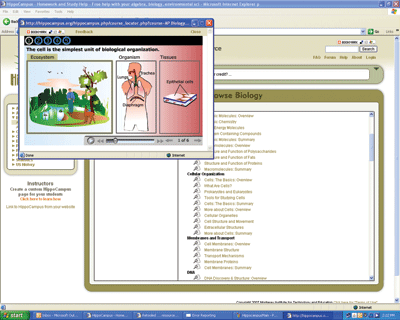 Let's see how and why multimedia enabled education scores over the traditional way…
Let's see how and why multimedia enabled education scores over the traditional way…
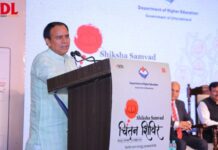
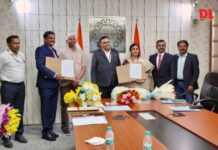



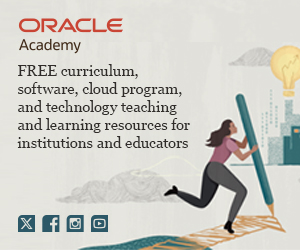

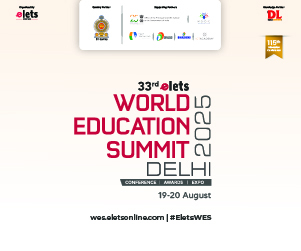



 DreamSpark is a software giveaway for students
DreamSpark is a software giveaway for students 
 The New FX
The New FX  It is a rare occurrence in K-12 education when a technology moves from being a useful classroom tool and becomes an education platform upon which an entire teaching philosophy is built. But that is precisely what has happened over the course of the last two decades, as interactive whiteboards from SMART Technologies (Calgary, Alberta, Canada) have become the focal point of the technology-driven, 21st- century classroom. Technology companies like SMART that have created a fundamental shift in education all have one thing in common: they provide an overall solution that is greater than the sum of their product's component parts.
It is a rare occurrence in K-12 education when a technology moves from being a useful classroom tool and becomes an education platform upon which an entire teaching philosophy is built. But that is precisely what has happened over the course of the last two decades, as interactive whiteboards from SMART Technologies (Calgary, Alberta, Canada) have become the focal point of the technology-driven, 21st- century classroom. Technology companies like SMART that have created a fundamental shift in education all have one thing in common: they provide an overall solution that is greater than the sum of their product's component parts.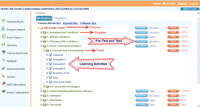
 Promising to improve the quality of Math and Science education through online learning activities,
Promising to improve the quality of Math and Science education through online learning activities,  When did a teacher know that information would be just one click away? Thanks to technology, the teachers of today are not restricted to the age old chalk and blackboard methods of teaching. Information and Communication Technology has come of age and has permeated in all areas of our lives and is a significant factor in increasing productivity in different fields.
When did a teacher know that information would be just one click away? Thanks to technology, the teachers of today are not restricted to the age old chalk and blackboard methods of teaching. Information and Communication Technology has come of age and has permeated in all areas of our lives and is a significant factor in increasing productivity in different fields. 








